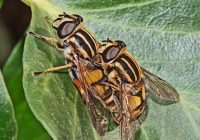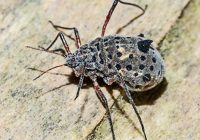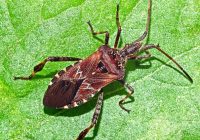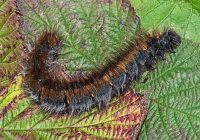Dr Phil Smith’s Wildlife Notes
October 2022
According to the Met. Office, October was another exceptionally mild month; the fourth warmest in England since records began in 1884. The persistence of above average temperatures was particularly unusual. With measurable rain here on 16 days, rainfall was about average for the month but our sand-dune water-table rose by only 1 cm, presumably due to the soil water-deficit caused by the drought. “We still need a lot of rainfall to replenish our water resources” says the Met. Office.
My October highlight came on 18th when Ian Wolfenden emailed that he had found four Southern Oak Bush-crickets (two of each sex) in his Thornton garden. He also had one in September but this was the first multiple sighting in the Northwest of an insect that only arrived in southern England in 2001 and got to Nottinghamshire by 2012. I wasted no time heading over to Ian’s to pick up the bush-crickets so that I could photograph them to confirm the record. There have only been three other North Merseyside observations of singles: two in Liverpool in September 2020 and November 2021 and one at Seaforth in July 2019. The remarkable thing is that this insect is wingless, it can’t fly, so how did it get here? One likely explanation is that it is known to hitch a lift on road vehicles. Although it is most abundant in the London area, distribution maps show this bush-cricket has got as far north as Leeds, while there is even an isolated record in central Scotland.
Another incredible find, but one that I only heard about after the event, was a Clifden Nonpareil moth that Ron Moyes found on 14th September in his light-trap at Ainsdale National Nature Reserve. This almost mythical species is a very large grey moth with a violet-blue band on its hind-wings. Also known as the Blue Underwing, it was the Victorian collector’s all-time favourite. Until recently, the moth was only known as a rare immigrant, being extinct as a breeder. Since 2007 it has colonised the south and is now spreading north. Lancashire Moth Group has a few old records for Lancashire but Ron’s seems to be the first for North Merseyside.
As usual in October, I visited several patches of flowering Ivy, mainly to look for Ivy Bees and late-flying hoverflies. I found humbug-striped Ivy Bees at Range Lane, Formby and Freshfield Station carpark, together with Oxford Road and Hesketh Road, both in Southport. The latter has over 50 m of flowering Ivy that also produced two mating pairs of the Common Tiger hoverfly, a beautiful White-clubbed Glasswing and several Field Digger Wasps. These colourful solitary wasps collect small flies to stock their nests and I watched one trying to subdue a large bluebottle.After a while, it decided the fly was too big and let it go. On 25th, I made a much-delayed pilgrimage to Crosby Coastal Park where Pete Kinsella had reported large numbers of Ivy Bees and other notable insects. Ivy Bees were indeed numerous; I estimated at least 20 on the Blucher Street Ivy, including three on the same leaf. Holden Road did not produce any more Ivy Bees but various hoverflies included the rather local Meadow Field Syrph, a species typically found in damp meadows and the uplands.
Several walks down Wicks Path at Formby Point were rewarded with two female Twin-spot Centurions on their usual bank and the distinctive parasitic fly Eriothrix rufomaculataa bristly black species, with prominent orange patches on the sides of its abdomen. Lots of Giant Willow Aphids were on the bridge across Wicks Lake, having fallen from overhanging trees. Up to 6 mm long, this is one of our largest aphids and can be abundant on willows in autumn. Infestations have been shown to have “drastic” effects on the shoots and roots of willows, though I can’t say I have noticed this. The aphid has three black tubercles on its back, described in the literature as “shark’s fins”; their function is unknown.
Our weekly ‘Buckthorn Bash’ events began on 6th with a record 20 volunteers cutting Sea Buckthorn and other invasive scrub on the Ainsdale dunes. There were unexpected insect bonuses; first an enormous adult Western Conifer Seed Bug spotted by Natalie Hunt during the ‘bash’ on 13th. This was only the third example of this American import that I have seen. Also welcome was a large, hairy Fox moth caterpillar found by another volunteer on 20thth. I used to see large numbers of these caterpillars on the dunes in autumn but they seem to be much less common these days.
Having missed an American Buff-breasted Sandpiper at RSPB Marshside by a few hours on 9th, I was reluctant to risk disappointment on another reported American vagrant, a Lesser Yellowlegs. However, after visiting the nearby Hesketh Road Ivy on 28th, I thought I would call in on the off-chance that the bird might still be present. Much to my surprise, there it was on shallow floods actively feeding amongst the Buttonweed in front of a group of admirers. Eventually, it was flushed by a Sparrowhawk and gave its distinctive “chew-chew” call.
On 24th, I headed for Cabin Hill NNR to photograph the English Longhorn cattle recently added to the usual compliment of about 50 Herdwick sheep. The seven young Longhorns are wary of people and I had to use my long telephoto, so as not to spook them. Together with the sheep, they have a big job to do over-winter, tackling the dense vegetation and scrub in the grazing enclosure. There was no surface water in the big borrow-pit; it was therefore a surprise when I flushed a Jack Snipe. In past years there has often been sufficient flooding by now to attract dozens of Common Snipe as well as the occasional Jack Snipe. A Buzzard seems to have taken up residence in Cabin Hill Wood. I watched it fly around the reserve, mobbed by a Carrion Crow, before it returned to its perch on the edge of the wood.
I noticed recently that the insect charity ‘Buglife’ has published detailed maps of ‘Important Invertebrate Areas’. Remarkably, these do not include the Sefton Coast, a strange omission also picked up by Ben Deed of Merseyside BioBank and Gary Hedges from Liverpool Museum. Hopefully, we can get this rectified!






